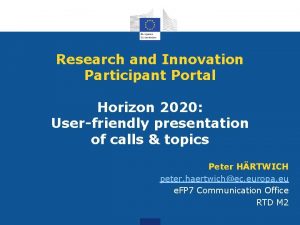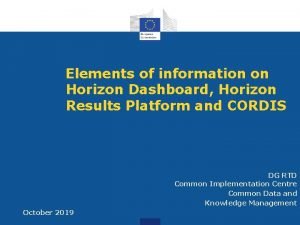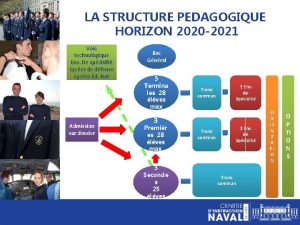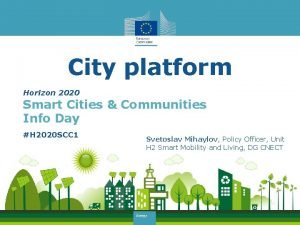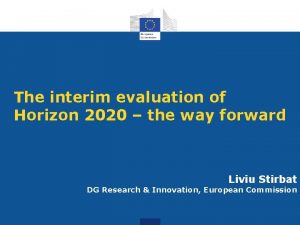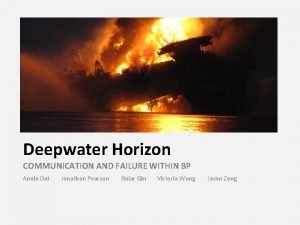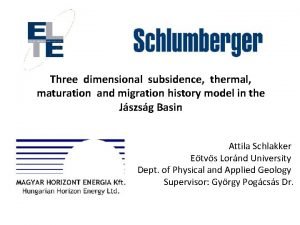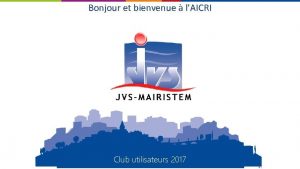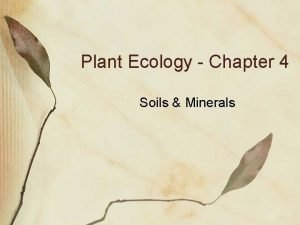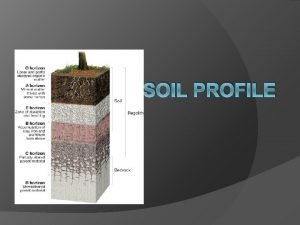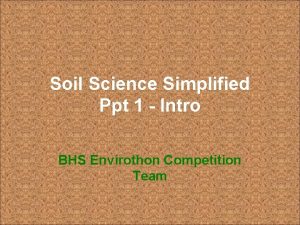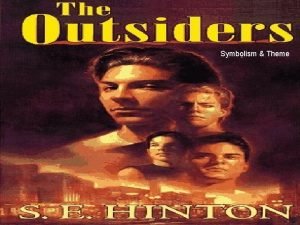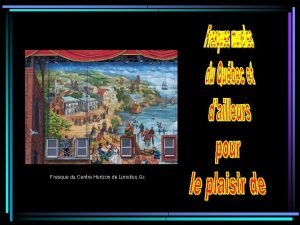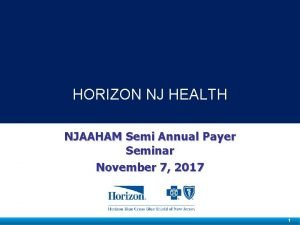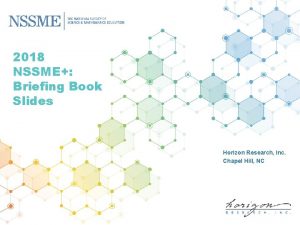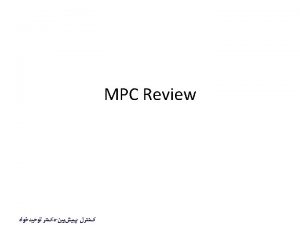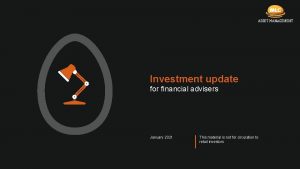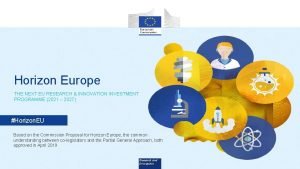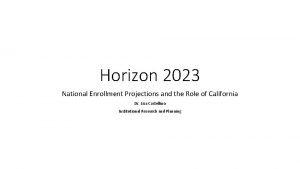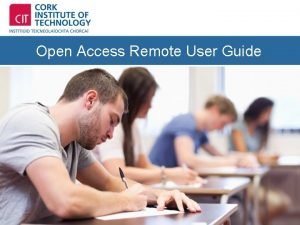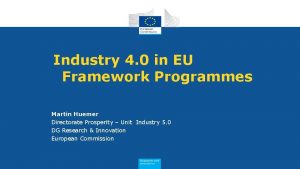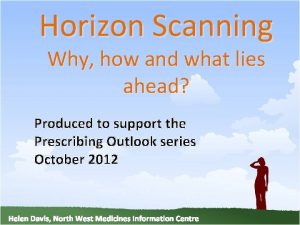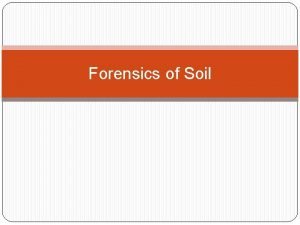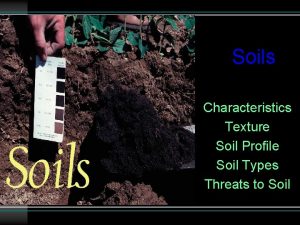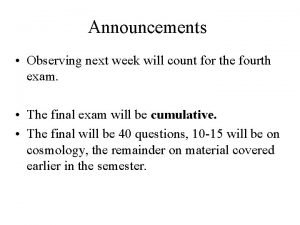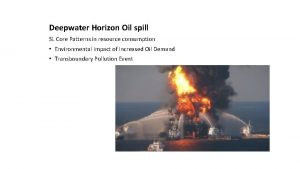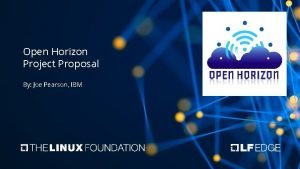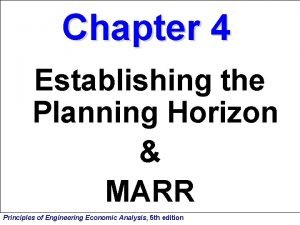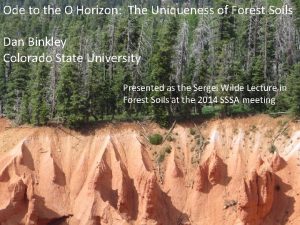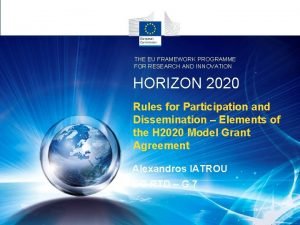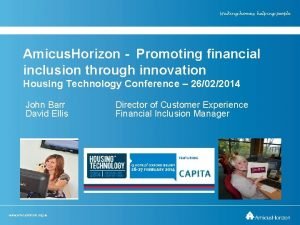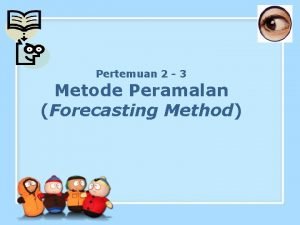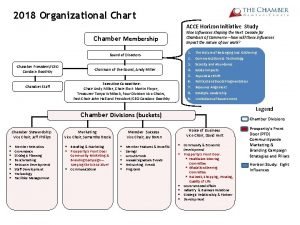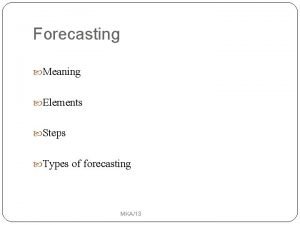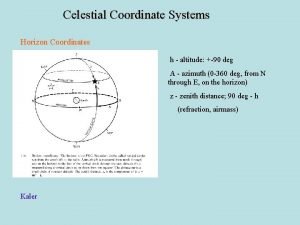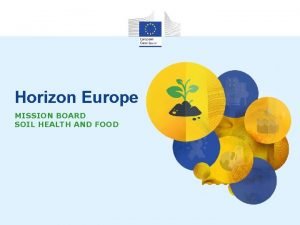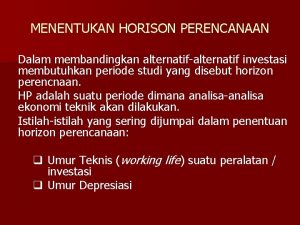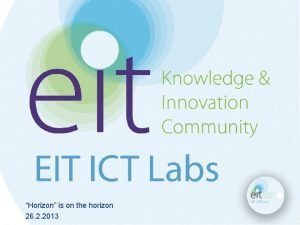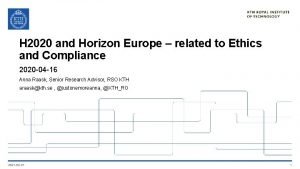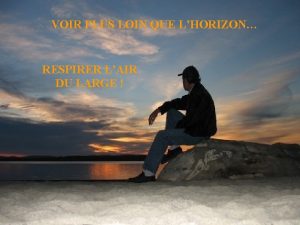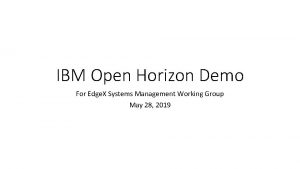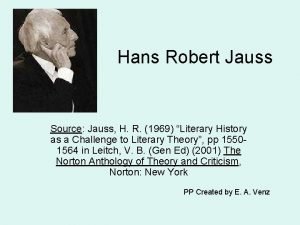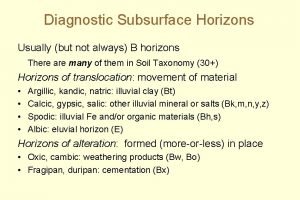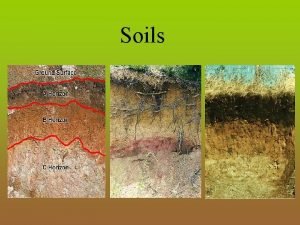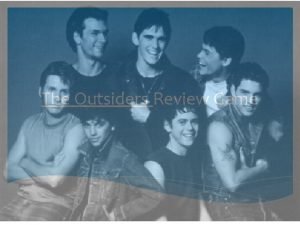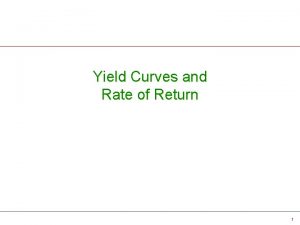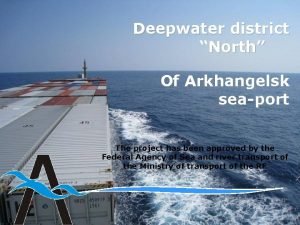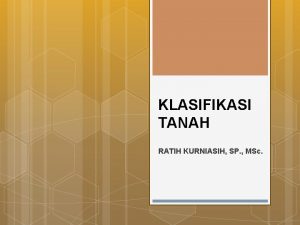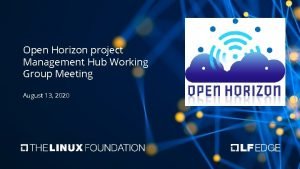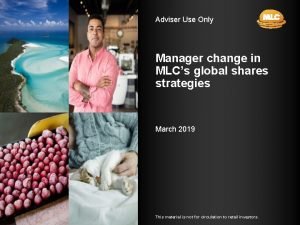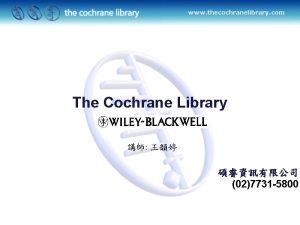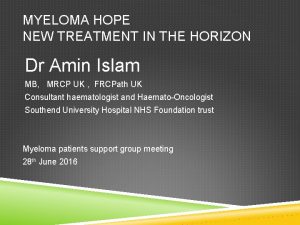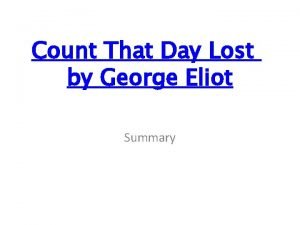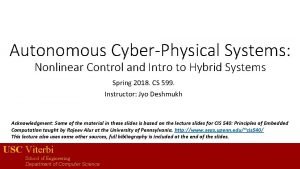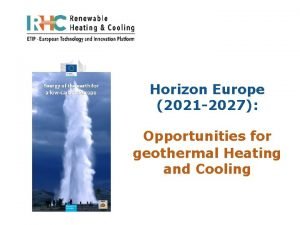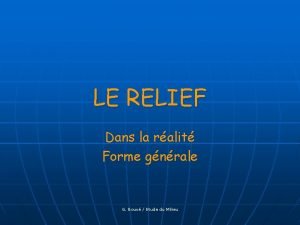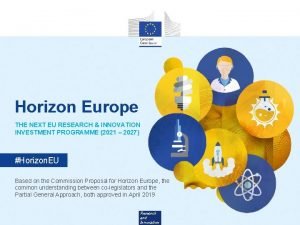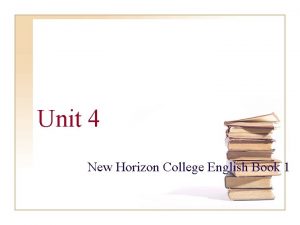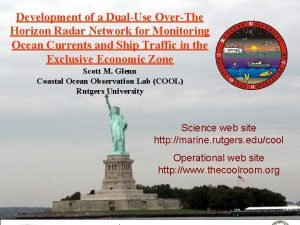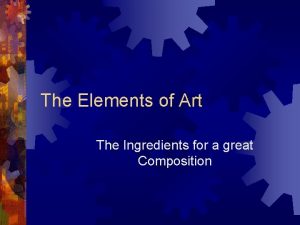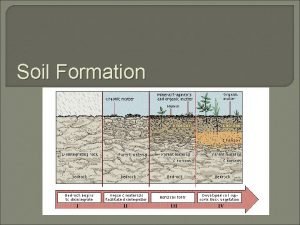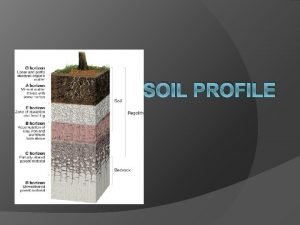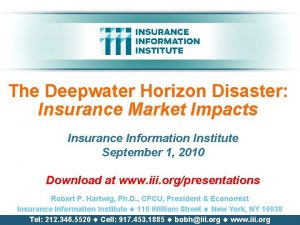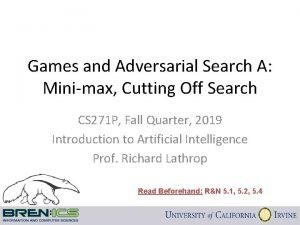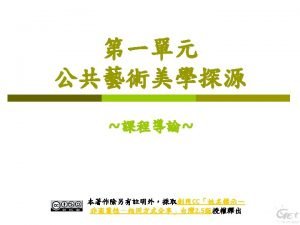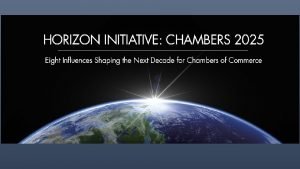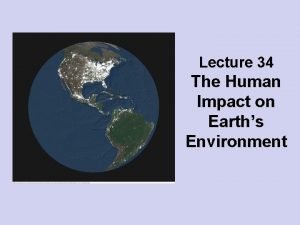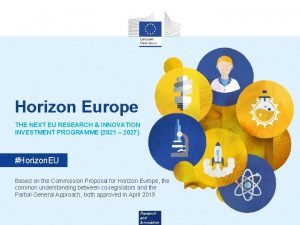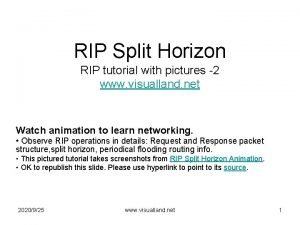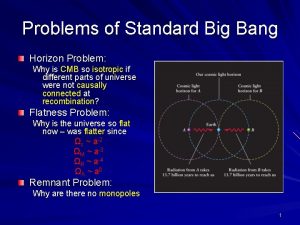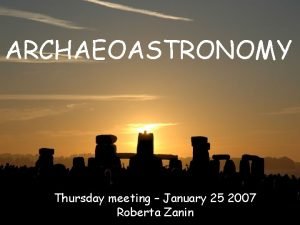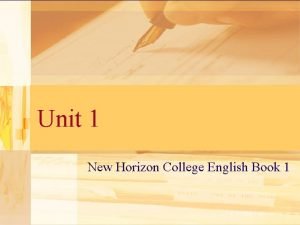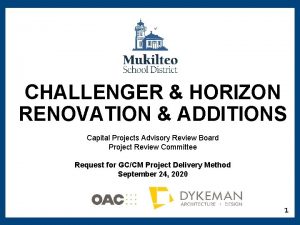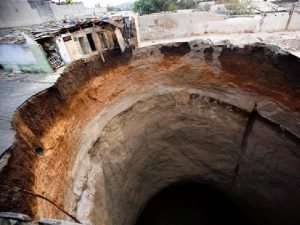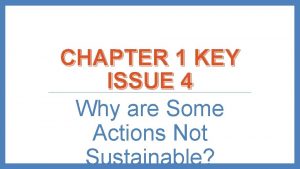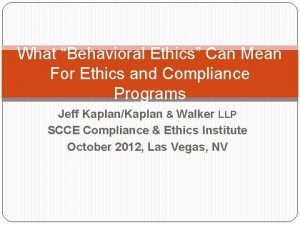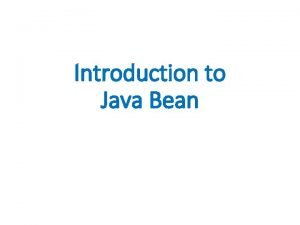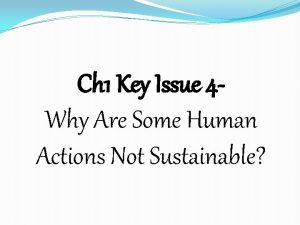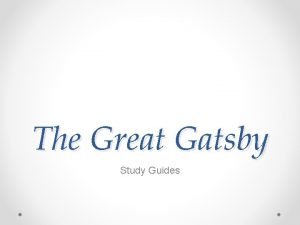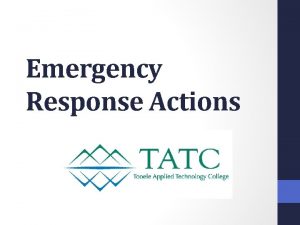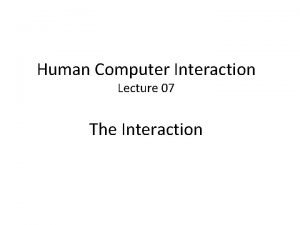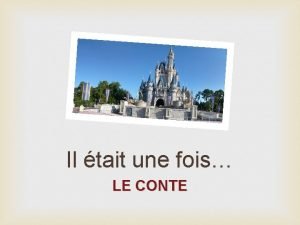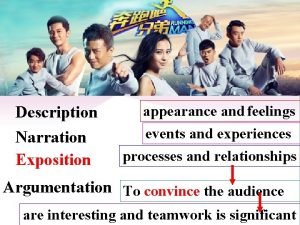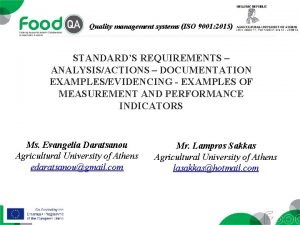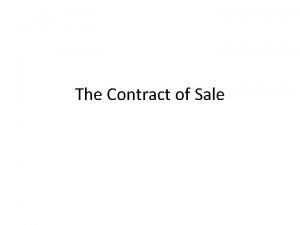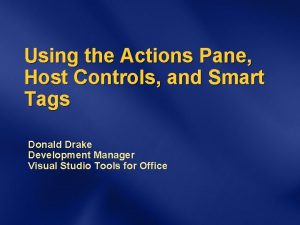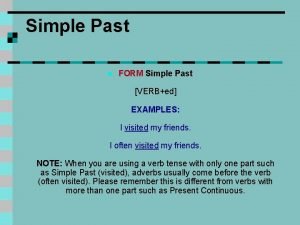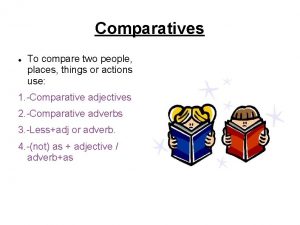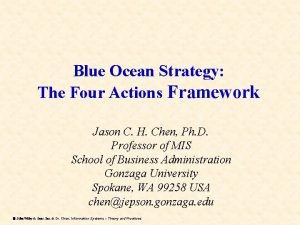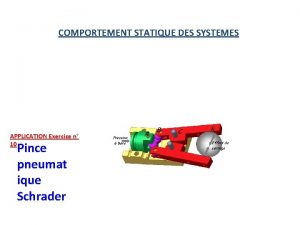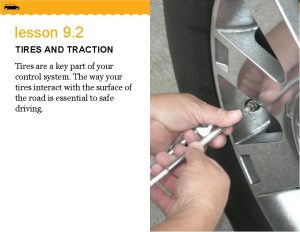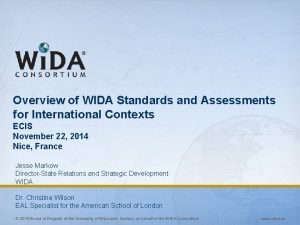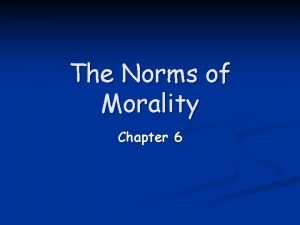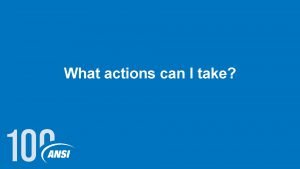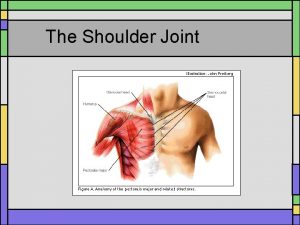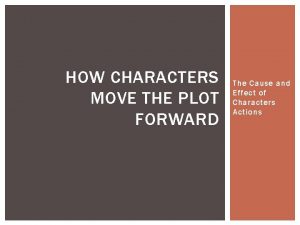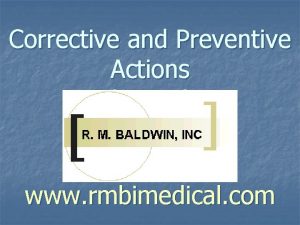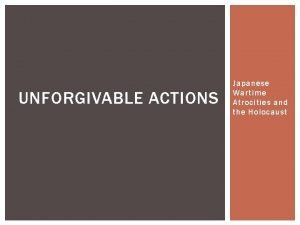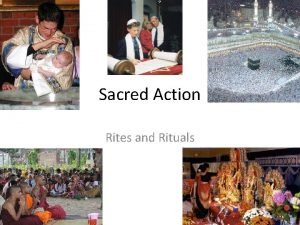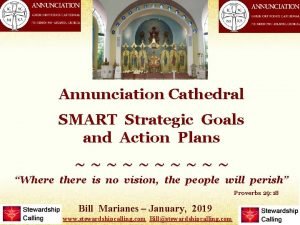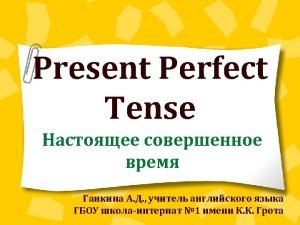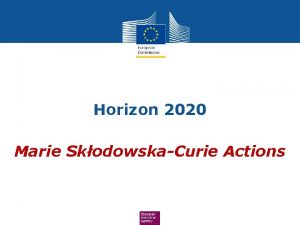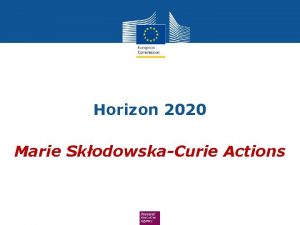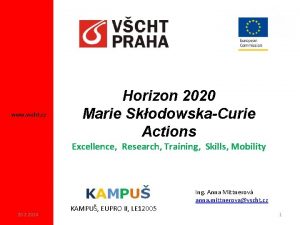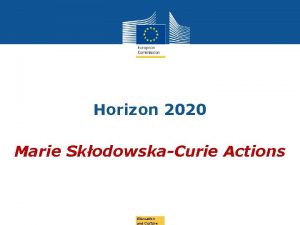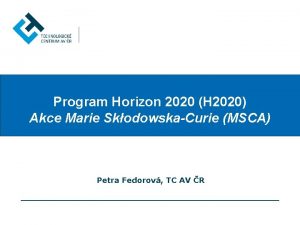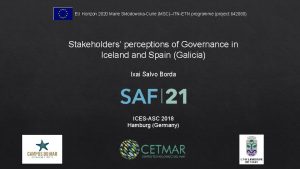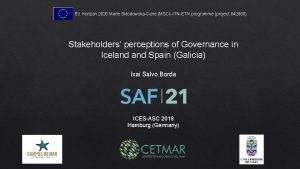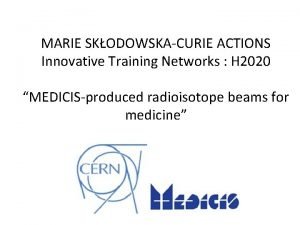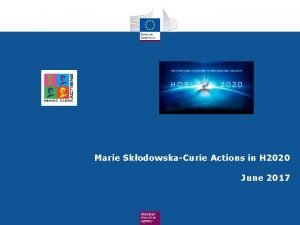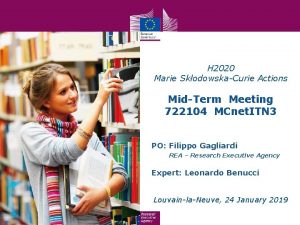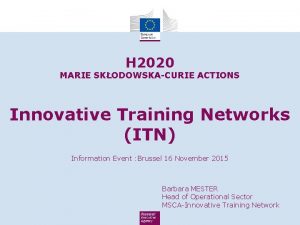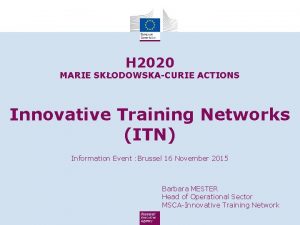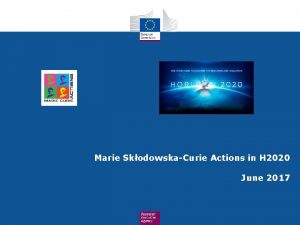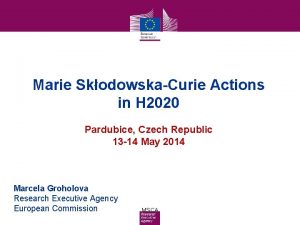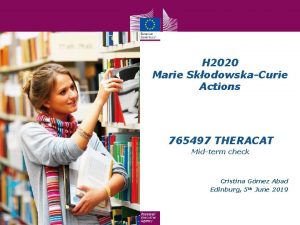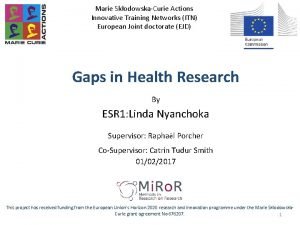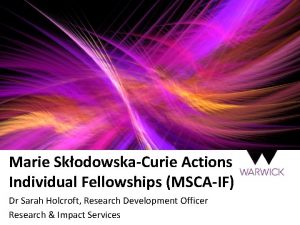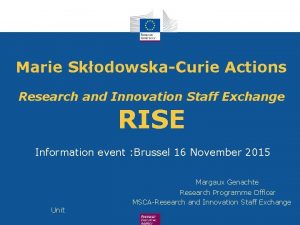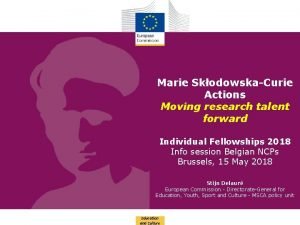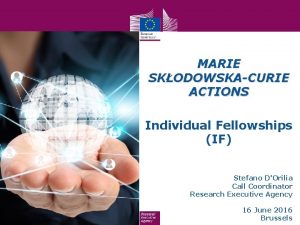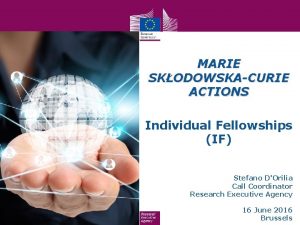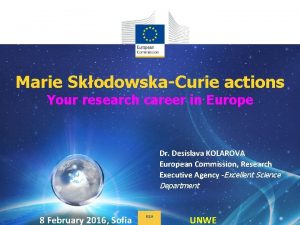Horizon 2020 Marie SkodowskaCurie Actions Journe dinformation rgionale














































































![COFUND Marie Skłodowska Curie Actions COFUND Research unit cost [person/month]*** Institutional unit cost [person/month] COFUND Marie Skłodowska Curie Actions COFUND Research unit cost [person/month]*** Institutional unit cost [person/month]](https://slidetodoc.com/presentation_image_h2/5a72182fd7a59180abe7877c48e7bcc5/image-79.jpg)


















































- Slides: 129

Horizon 2020 Marie Skłodowska-Curie Actions Journée d’information régionale 2017

MSCA - strategic programming approach Ø Attract and retain research talent Ø Develop state-of-the-art, innovative training schemes, consistent with the highly competitive and increasingly inter-disciplinary requirements of research and innovation Ø Promote sustainable career development in research and innovation Ø Focus on delivering new knowledge and skills, in line with the key driver identified in the strategic programming approach Ø Contribute to a strong partnership with MS via the co-funding mechanism

Key features of the MSCA part Ø Open to all domains of research and innovation from basic research up to market takeup and innovation services Ø Entirely bottom-up Ø Participation of non-academic sector strongly encouraged, especially industry and SMEs Ø Mobility as the key requirement - funding on condition participants move from one country to another Ø Promotion of attractive working and employment conditions Ø Particular attention to gender balance Ø Budget 2014/2020 : 6 162 billion €


Researchers Definitions Early Stage Researchers Ø Shall at the time of recruitment (ITN, COFUND) or secondment (RISE), be in the first four years (full-time equivalent) of their research careers and have not yet been awarded a doctoral degree Experienced Researchers Ø Shall, at the time of the relevant deadline for submission of proposals (IF), recruitment (COFUND) or secondment (RISE), be in possession of a doctoral degree or have at least four years of full-time equivalent research experience Nationality, residence Ø Global fellowships and Reintegration panel in IF are open to nationals or long-term residents of EU Member States and Associated Countries. Ø Long-term residence means a period of full-time research activity of at least 5 consecutive years

Definitions Who applies? International networks of organisations actively involved in research/doctoral training Academic sector public /private higher education establishments awarding academic degrees public /private non-profit research organisations whose primary mission is to pursue research international European interest organisations (e. g. CERN, EMBL) Non-academic sector any entity not included in the academic sector: e. g. large companies, SMEs, NGOs, museums, hospitals international organisations (e. g. UN, WHO) Standardised legal validation of entities is applied to determine the domain of each participant

Definitions Beneficiary vs. Signs Grant Agreement Recruits and Hosts Researchers Trains/Hosts Researchers on secondment Participates in Supervisory Board Directly Claims Costs EU funding Partner Organisation

IF : Individual Fellowships

Objectives Ø to enhance the creative and innovative potential of experienced researchers Ø to provide opportunities to acquire new knowledge, resume a career or return to Europe Ø the beneficiary shall be a participant established in EU (MS/AC) and employing the researcher during the project Scope Ø Trans-national fellowships awarded to the best or most promising researchers Ø European Fellowships (12 -24 months) or Global Fellowships (12 -24 months + mandatory return phase of 12 months) Ø Career Restart Panel, Reintegration Panel and Society and Enterprise Panel Ø Secondments, notably in the non-academic sector Expected Impact Ø to release the full potential of researchers and development of their careers in both the academic and non-academic sectors

Individual Fellowships

European Fellowships (EF) Four types of mobility from 12 to 24 months 1. Standard European Fellowship 2. Career Restart Panel : after a career break (parental leave, working outside research, etc. ) of at least 12 months 3. Reintegration Panel : to return and reintegrate In a longer term research position in Europe 4. Society and Enterprise : to work on research and innovation projects in an organisation from the non -academic sector

European Fellowships (EF) One experienced researcher applies jointly with one host institution located in a MS or AC for a research project that can last between 12 and 24 months Host institution (future beneficiary) Location : MS or AC Sector : Academic or non-academic International European Interest Organisation (IEIO) International Organisations (exceptional cases) Appoints the Supervisor (who will legally act in the name of the organisation until the Grant Preparation phase) Recruits the experienced researcher under the condition established in the Grant Agreement (contract of employment)

European Fellowships (EF) Researcher (future fellow) : Experienced researcher : Ph. D or at least 4 years of full-time equivalent research experience by the call deadline Full-Time Equivalent Research Experience is measured from the date when the researcher obtained the degree entitling him/her to embark on a doctorate, eigher in the country in which the degree was obtained or in the country in which the researcher is recruted, even if a doctorate was never started or envisaged Must undertake transnational mobility Nationality : any (exception for the Reintegration Panel) Recruited by the beneficiary under the condition established in the Grant Agreement (contract of employment)

European Fellowships (EF) The project is written by the experienced researcher, a concrete plan of trainingthrough-research for 12 -24 months at the host organisation’s premises Realistic and well-defined objective in terms of career advancement (e. g. by attaining a leading independant position) or resuming a research carrer after a break Typical training activities may include : Primarly training-through-research : individual personalised action Hands-on training activities for developing scientific (new techniques, instruments, …) and transferable skills Inter-sectoral or interdisciplinary transfer of knowkedge (e. g. through secondments) Taking part in the research and financial mangement of the action Organisation of scientific/training/dissemination events Communication, outreach activities and horizontal skills Training dedicated to gender issues

Standard European fellowship

Career Restart Panel

Reintegration Panel

Society and Enterprise Society and entreprise panel

Global Fellowships Features Outgoing phase in a Third Country (from 12 to 24 months) Outgoing phase Return phase International (Not MS / AC) Mandatory 12 month return phase to the beneficiary located in a MS or AC Member State / Associated Country Mandatory letter of commitment from the partner organisation

Global Fellowships One experienced researcher applies jointly with one host institution located in a MS or AC for a research project that has an initial outgoing phase in Partner Organisation in a Third Country and the whole project can last between 24 and 36 months Partner organisation Location : Third Country (not MS or AC) Sector : Academic or non-academic International Organisations Nominates a Supervisor for the researcher Provides the Commitment Letter signed by the legal representative Does not sign the Grant Agreement Does not recruit the researcher Does not directly claim costs from the action

Global Fellowships

Global Fellowships

Secondments When : During the implementation of the project Who : the Experienced Researcher Where : to partner organisation – another institution including IO located in Europe (MS/AC) or to an IEIO How long : Clearly justified and described in Part B Single period or divided into shorter mobility periods Can be at more than one partner organisation Can be to an institution in the same country as the beneficiary Can be in the same sector (academic-academic)

Secondments



CALL Results - Statistics

CALL Results - Statistics

CALL Results - Statistics

CALL Results - Statistics

CALL Results - Statistics

CALL Results - Statistics

CALL Results - Statistics

CALL IF – Next Call H 2020 -MSCA-IF-2017 - Opens 11 st April 2017 - Deadline: 14 th September 2017 (17. 00 – Brussels time) Results of the evaluation: 5 months after the call deadline Signing of grant agreements: 8 months after the call deadline

ITN Innovative Training Networks

ITN Objectives • Train innovative early-stage researchers • Excellence in doctoral/early-stage research training • Provide skills to match public and private sector needs ITN Expected impact • Improved career perspectives of researchers • Structured high-quality research / doctoral training • Collaboration academia with non-academic sectors Excellence: International network of organisations applies and proposes a joint research training or doctoral programme Bottom-up (no pre-defined topics) All domains*: CHE, ECO, ENG, ENV, LIF, MAT, PHY, SOC Multidisciplinary approach Meaningful exposure to non-academic sector

ITN typical activities • Core activity: Training through individual research projects • Network-wide training activities (e. g. seminars, workshops, summer schools). • Training in key transferable skills (e. g. entrepreneurship, management, IPR, communication, ethics, grant writing). • Collaboration and exchange of knowledge within the network • Communication & Dissemination • Public engagement

ITN Who can be recruited? Researcher-months requested in proposal Recruitment after the project starts. Only Early-Stage Researchers (ESRs): q ≤ 4 years of research experience q no Ph. D yet Recruitment: 3 to 36 months (typical) Mandatory trans-national mobility at the time of recruitment.

ITN EU 28 Member States (MS) Associated Countries (AC) Other Third Countries (OTC) ETN European Training Network Participants implement a joint research programme Min. 3 beneficiaries from any sector from 3 different MS/AC EID European Industrial Doctorates Doctoral programme with the non-academic sector Min. 2 beneficiaries from 2 different MS/AC: min. 1 from academic sector + min. 1 from non-academic sector EJD European Joint Doctorates Doctoral programme to deliver joint degrees Min. 3 beneficiaries from academic sector awarding Ph. D from 3 different MS/AC Above this minimum: participants from any sector / country Research fields chosen freely by applicants (CHE, ECO, ENG, ENV, LIF, MAT, PHY, SOC)

ITN - ETN – European Training Network Participants implement a joint research training programme Mandatory Min. 3 beneficiaries from 3 different MS/AC Each beneficiary recruits and hosts at least 1 ESR Max 540 person-months (e. g. 15 ESRs x 36 months) Other features Non-academic participation essential Ph. D enrolment typically expected (not mandatory) Secondments to other countries/sector/disciplines (≤ 30% time) Joint supervision recommended Partner organisations (any country/sector)

ITN - ETN Participants implement a joint research training programme Beneficiaries Partner organisations

ITN - EID – European Industrial Doctorates Doctoral training with the non-academic sector Min. 2 organisations from 2 different EU/ associated countries 1 academic awarding Ph. D + 1 non-academic Max 180 person-months (if 2 organisations) - e. g. 5 x 36 months Max 540 person-months (if ≥ 3 organisations) - e. g. 15 x 36 months Individual research projects under the topic of the doctoral programme Flexible recruitment rule Each fellow enrolled in the doctoral programme Each fellow must spend ≥ 50% of time in non-academic sector Secondments possible Partner organisations (any country/sector)

ITN - EID ≥ 50% time for each ESR Beneficiaries Partner organisations non-academic sector 2 beneficiaries : max 180 PM

ITN - EID ≥ 50% time for each ESR Beneficiaries Partner organisations non-academic sector ≥ 3 beneficiaries: max 540 PM

ITN - EJD – European Joint Doctorates Universities cooperating to deliver joint/multiple doctoral degrees Mandatory Min. 3 beneficiaries from academic sector awarding Ph. Ds, from 3 different MS/AC Each ESR enrolled in the joint (international) doctoral programme Joint selection, training and supervision Commitment to deliver joint/double/multi degrees Max 540 person-months Other features Meaningful stays at joint doctorate beneficiaries Non-academic participation through secondments to other sector/disciplines possible Flexible recruitment rule

ITN - EJD Joint Ph. D Beneficiaries Letters of institutional commitment to deliver degrees are required in the proposal Partner Organisations

ITN

ITN Unit costs/1 researcher month: Marie Skłodowska Curie Actions Innovative Training Networks Researcher unit cost [person/month] Institutional unit cost [person/month] Living allowance Mobility allowance Family Allowance Research, training and networking costs Management and indirect costs 3 110 600 500 1 800 1 200 • Country correction coefficient applies to the living allowance • Researcher allowances include employer contributions. • Researcher allowances are a minimum to be paid (top-up funds from other sources permitted).


ITN 2018 H 2020 -MSCA-ITN-2018 Opened 12 october 2017 R D T F A Closure: 16 january 2018 (17: 00 Brussels time) Budget: € 442 Million (ETN: 375 M€, EID: 32 M€; EJD: 35 M€) Results of the evaluation: 5 months after the call deadline Signing of grant agreements: 8 months after the call deadline


2014 2015 2016 Submissions 1161 1563 1611 A-List 121 106 109 A-List ETN 94 83 85 A-List EJD 8 8 8 A-List EID 19 15 16


RISE Research and Innovation Staff Exchange

RISE New type of exchange of staff action to stimulate transfer of knowledge Academic and non-academic participants Flexible inter-sector and international exchange of highly skilled research and innovation staff members Work with existing staff – no recruitment foreseen Based on a common project Bottom-up approach

RISE 2 dimensions of projects promoting staff exchanges : ØMS/AC and TC => International ØAcademic and non-academic sectors => Inter-sectoral

RISE Project built on joint research and innovation activities Project implemented through the secondment of staff (no recruitments) Each staff member seconded for a period of 1 to 12 months The maximum size for a project is 540 person months No minimum size explicitly defined for the project, but substantial impact is expected Maximum project duration is 4 years

RISE All Countries can participate in RISE, but not all are eligible for funding All institutions fulfilling the requirements of the Horizon 2020 Rules for Participation can participate in RISE Beneficiaries : sign the Grant and claim the costs, established in a MS/AC Partner organisations : Must include a letter of commitment, are established in a Third Country (i. e. neither MS or AC)

RISE Ø Actively engaged in or linked to research/innovation activities for at least 6 months prior to first secondment Ø Types of staff members: ESR (no Ph. D and < 4 years experience) ER (Ph. D or > 4 years experience) Managerial staff Administrative or Technical staff Ø In-built return mechanism

RISE At least 3 independent participants in 3 different countries of which at least 2 participants from 2 different MS/AC Add RISE condition for funding secondment : Always between different countries and - International (MS/AC Third Countries) - Intersectoral (Academic Non-Academic)

Countries Eligible For EU Funding EU Member States Overseas Countries and Territories linked to the MS As defined on page 3 of General Annex A to the Horizon 2020 Work Programme 2014 -2015 ) Horizon 2020 Associated Countries (In principle, the same as FP 7, but subject to the adoption of the association agreements) The Third Countries listed (On page 3 of General Annex A to the Horizon 2020 Work Programme 2014 -2015)

Countries Eligible For EU Funding Countries not listed previously are not eligible for EU funding In practice, those countries are mainly: Australia, Brazil, Canada, China, India, Japan Mexico, New Zealand, Republic of Korea, Russia, United States. In very exceptional cases, partners from those countries might be funded. But the following conditions have to be fulfilled: a) This partner has competences/expertise that no organisation in MS/AC has b) The relevant transfer of knowledge can only be done via a secondment in the direction TC MS/AC c) Points a) and b) must be endorsed by the expert evaluators d) The experts' endorsement (point c) must be confirmed by the REA

EU Contribution Unit costs per researcher per month For secondments eligible for funding Marie Skłodowska-Curie Action Research and Innovation Staff Exchange Staff member unit cost * Institutional unit cost * person/month Top-up allowance 2 000 Research, training and Management networking costs and indirect costs 1 800 *These unit costs are subject to a funding rate of 100% and no country coefficients apply. 700

EU Contribution Staff member unit cost : support the travel, accommodation and subsistence costs linked to the respective secondments. Participants are expected to continue paying the salary of the seconded staff during the period of exchange. The EU contribution is fully used for the benefit of the seconded staff members -Paid directly to the seconded staff member -Managed centrally by the beneficiary according to the specific needs of the secondment -Combination of the two Research, training and networking costs : costs related to the activities of the project (consumables, conferences, workshops, coordination…) Management and indirect costs : organisation and implementation of the secondment (administrative and financial management, legal advice…)


Next call: - H 2020 -MSCA-RISE-2017 - Opens 07 December 2017 - Deadline: 18 April 2018 - Budget: € 80 Million T F A after the call deadline Results of the evaluation: 5 R months D Signing of grant agreements: 8 months after the call deadline



Success rates

RISE 2016: A-list – Success rates 120 22, 9% A list 100 80 A-list 60 Others 40 20 0 CHE ECO ENG ENV LIF MAT PHY SOC Others 25 14 85 43 33 8 27 47 A-list 9 4 28 9 11 3 7 13


COFUND

COFUND Objectives to stimulate regional, national or international programmes to foster excellence in researchers' training, mobility and career development Scope Co-funding new or existing regional, national, and international programmes to open up to, and provide for, international, intersectoral and interdicisplinary research training, as well as transnational and cross-sector mobility of researchers at all stages of their career Possibilities of synergies with structural funds Doctoral Programmes (for ESR) and Fellowship Programmes (for ER) Researchers to comply with the mobility rules of the MSCA Minimum support for researchers: 3 months Implemented by a sole beneficiary Expected Impact to exploit synergies between European Union actions and those at regional, national, and international level, and leverage funding

COFUND Early Stage Researchers Shall at the time of recruitment, be in the first four years (full-time equivalent) of their research careers and have not yet been awarded a doctoral degree Experienced Researchers Shall, at the time of recruitment, be in possession of a doctoral degree or have at least four years of full-time equivalent research experience Mobility rules At the time of the recruitment by the host organisation, researchers shall not have resided or carried out their main activity in the country of their host organisation for more than 12 months in the 3 years immediately prior to the reference date

COFUND Budget € 80 Million in 2017 (€ 30 Million reserved for Doctoral Programmes) Maximum € 10 Million per single applicant per call EU contribution to cover living allowances for researchers and management costs 50% co-funding for established unit costs Minimum living allowance established in the WP Duration Minimum 3 years, maximum 5 years (including the time taken to publish call and recruit researchers) Fellowships: minimum 3 months

COFUND

COFUND Doctoral Programmes Training follows the EU Principles on Innovative Doctoral Training Collaboration with a wider set of partners, including from the non-academic sector, which may provide hosting or secondment opportunities or training Fellowship Programmes Regular selection rounds following fixed deadlines or regular cut-off dates allowing a fair competition between applying researchers The selections should be based on open, widely advertised competition, with transparent international peer review and selection of candidates on merits. Mobility types may be similar to the ones supported under Marie Skłodowska-Curie. Limitations regarding the researchers' origin and destination should be avoided Proposed programmes are encouraged to cover all research disciplines

COFUND Each single application must only address the doctoral or fellowship programme, but More than one application can be submitted Recruited researcher must respect the same mobility rule as MSCA actions. Existing programmes can continue with own mobility rule if well-justified. Unless prohibited by national legislation, all fellows, including doctoral fellows, must be recruited on a work contract. In the doctoral programme, all fellows must be registered for a Ph. D
![COFUND Marie Skłodowska Curie Actions COFUND Research unit cost personmonth Institutional unit cost personmonth COFUND Marie Skłodowska Curie Actions COFUND Research unit cost [person/month]*** Institutional unit cost [person/month]](https://slidetodoc.com/presentation_image_h2/5a72182fd7a59180abe7877c48e7bcc5/image-79.jpg)
COFUND Marie Skłodowska Curie Actions COFUND Research unit cost [person/month]*** Institutional unit cost [person/month] Early-stage researchers 3 710 Experienced researchers 5 250 650 *** These unit costs will be subject to a co-funding rate of 50% The living and mobility allowances provided by the programmes for the benefit of the researchers Recruited under an employment contract shall in no case be lower than € 2 597 (ESR) and € 3 675 (ER) Recruited under a status equivalent to a fixed-amount fellowship shall in no case be lower than € 1 298, 50 (ESR) and € 1 837, 50 (ER)

COFUND Publication date: 5 April 2017 Deadline(s): 28 September 2017 at 17. 00 Brussels time 30 M€ are allocated to Doctoral Programmes Contribution has maximum overall of 10 M€ to a single applicant Duration: 36 to 60 months. This duration includes also the time that is needed to select or recruit the researchers Participants having benefited from COFUND under previous calls will explain how the latest proposal relates to and goes beyond the earlier grant and provide evidence for its quality





Submission of the proposal and Evaluation

Where to find information ? Participant Portal Call pages Guide for Applicants Work Programme (2016 -17) FAQ Descriptors

Contact and useful information § The Europe grant office of the host institution § The National Contact Point : Advice; meetings, trainings but not proofreading pcn-mariescurie@recherche. gouv. fr § Work programme 2016/2017 § Guide for applicants and templates of the year of the call § European policies § EU principles –(ex. EU principles for innovative training networks : –http: //ec. europa. eu/euraxess/pdf/research_policies/Principles_for_Innovative_Doctoral_Training. pdf)

Participant portal

Participant portal

Authentication service Ensure you have your EU Login account and the PIC number of the host institution (beneficiary)

Structure of the proposal Part A - structured data - Part B - description of action -

Part A This part is filled online General information : title, acronym of the project, abstract (2000 characters max. ) § Panels, descriptors and key words will guide the REA in the selection of experts for proposal evaluations Data of participating organisations : the PIC (Participant Identification Code) is the one of the beneficiary The budget will be calculated automatically Ethics issues table Validate your data, and « Save and close »

Part B

Evaluation criteria

Evaluation criteria

Evaluation process 3 Individual Assessments Consensus Ranked list Proposal A Proposal B B>A>C Proposal C Remote Central NEW : REMOTE CONSENSUS REPORT to reduce workload during Central week

Panels Proposals are allocated to one of the eight main evaluation panels: § § § § Chemistry (CHE) Social Sciences and Humanities (SOC) Economic Sciences (ECO) Information Science and Engineering (ENG) Environment and Geosciences (ENV) Life Sciences (LIF) Mathematics (MAT) Physics (PHY) In ITN, separate multidisciplinary panels will be created for EID and the EJD In IF, separate multidisciplinary panels will be created for the Career Restart Panel (CAR), the Reintegration Panel (RI), and the Society and Enterprise Panel (SE). COFUND evaluation will be organised in two different panels: Doctoral programmes and Fellowship programmes

Procedure § For each panel a ranked list is established § The distribution of the budget of the call will be proportional to the number of eligible proposals received in each panel, except where a specific budget for a multidisciplinary panel has been fixed in the call. § Excess budget will be reallocated to the other panels § Proposals will not be evaluated anonymously. § A panel review will recommend one or more ranked lists for the proposals § Priority order for proposals which have been awarded the same score § If necessary, any further prioritisation will be based on other appropriate characteristics, to be decided by the panel

Award criteria : key features Evaluation scores will be awarded for each of the criteria, not for their individual elements Each criterion scored from 0 to 5 - decimal points will be given: o 0 - The proposal fails to address the criterion under examination or due to missing or incomplete information o 1 - Poor. The criterion is addressed in an inadequate manner, or there are serious inherent weaknesses. o 2 - Fair. While the proposal broadly addresses the criterion, there are significant weaknesses. o 3 - Good. The proposal addresses the criterion well, although improvements would be necessary. o 4 - Very good. The proposal addresses the criterion very well, although certain improvements are still possible. o 5 - Excellent. The proposal successfully addresses all relevant aspects of the criterion in question. Any shortcomings are minor. Total score subject to a threshold of 70% cannot be judged

Evaluation summary report

Reminders Experts will evaluate proposals as submitted (not on its potential if certain changes were to be made) Proposals selected for funding are converted into description of work of the grant agreement. Commitment Letters and recommendation letters No reference to the outcome of previous evaluations in part B Ethics (part A and part B)

Recommendations

Recommendations : project 1 - Choose the right call, the right area, consult NCP (eligibility) 2 - Respect conditions (participants, full time, budget, etc. ) 3 - Show European dimension (scale, populations, cooperation) 4 - Develop perspectives (synergies, future…) 5 - Choose the right duration of your project in line with the objectives 6 - Have a strong partnership (host/you), complementarity, time 7 - Plan research and Training 8 - Have a work programme : use Gantt chart 9 - Mention interdisciplinarity, intersectorality, gender 10 - Describe carefully the methodology (advantages/difficulties) 11 - State of the art should be accurate 12 - Choose a problem-solving approach 13 - Choose clear and measurable objectives 14 - Insist on the innovative part of your project

Recommendations : training 1. Integrate training about equipment, new tools, new software 2. Take part in internal seminars, workshops, summer schools, … 3. Participate to dissemination of scientific culture 4. How to answer research calls 5. Financial training + management 6. Complementarity skills 7. (communication, Intellectual property, management…) 8. Inter-sectoral (public/private) relation, employability 9. Launch new collaborations

Recommendations : host institutions 1. Choose a well known laboratories, with a good reputation, and their complementarity 2. Choose a well known supervisors 3. Choose institutions with a high level of quality 4. Underline the main achievement of the institutions : patents, publications, number of Ph. D, contracts, international projects… 5. Describe carefully the infrastructure/equipment…

Recommendations : implementation 1. Describe responsibilities (who do what) 2. Anticipate resolution of conflicts, organise communication (meetings) 3. Describe the risks 4. Resources : environment, infrastructures 5. Describe host institution (library, equipment…) 6. Describe type of contract (justify stipend)

Recommendations : impact 1. Interest of your mobility (IF projects) for you, for the lab, etc. 2. Describe synergies (societal challenges) 3. Describe the European “added value” 4. Link your research with European policies : (ex: green papers, recommendations…) 5. Propose outreach activities with details 6. Propose links with students, with medias

Recommendations : writing 1. Respect the number of pages 2. Write in English and in good English (concision, accuracy) 3. Take care of the format : separations, tables, bold…) 4. Avoid redundancies 5. Give easy access to the information (numbers, tables, references…) 6. Read all documents : guides, guidelines for evaluators… 7. Write with the help of the supervisor and host institution (IF projects) 8. Take time for Abstract and keywords 9. Think as if you were the evaluator 10. Evaluators are from all over Europe and beyond 11. Forget national codes) 12. Take care of the criteria, weighting, threshold, success rates… 13. Give your proposal to read 14. Find an accepted project

Communication and outreach activities

Outreach activities Marie Curie Ambassadors : visit schools, universities… to promote your research field to students and public audiences Worshop Day : in areas to the raising of scientific awareness Summer-school week University or lab open day Publick talks : interviews, podcasts, articles in Newspapers EC Events Marie Curie Alumni Assocation

Dissemination and exploitation of results

IP Issues Présentation des services de l’IPR Helpdesk La propriété intellectuelle dans Horizon 2020 Conseiller les porteurs de projet sur la propriété intellectuelle IPR Helpdesk Fact sheet

Human resources strategy for researcher HRS 4 R

EURAXESS Website

http: //www. horizon 2020. gouv. fr/cid 79134/boite-outils-pour-les-actionsmarie-sklodowska-curie. html

National Contact Point : pcn. mariescurie@recherche. gouv. fr Sandrine Schott-Carrière – Université de Strasbourg Martine Roussel – RCP – MENESR Sophie Beaubron – Université de Grenoble Alpes Jean Jacques Bernadini – Alsace Innovation Morgane Bureau – INSERM Koralia Pavlaki – CNRS Jean Marie Pincemin – Université de Poitiers Cyrielle Tirman – Université de Lille - SHS

pcn-mariescurie@recherche. gouv. fr

ESR Analysis Individual fellowships

Excellence (a/c) 1. Projet scientifique Etat de l’art Introduire le projet scientifique avec une description détaillée de l’état de l’art et les challenges actuels à relever Permettre la justification de l’approche, des méthodes et des activités choisies Montrer les avancées proposées par le projet pour dépasser cet état de l’art Projet Proposer un projet structuré, innovant, crédible, pertinent, opportun, ambitieux, original, stimulant Choisir des méthodologies adaptées Avoir une approche inter/multidisciplinaire Utiliser des technologies de pointe Souligner les opportunités de formation et d’acquisition de nouvelles connaissances Rédiger un plan de carrière soutenu et ciblé incluant l’intégration optimale du chercheur, sa formation et des compétences transférables pour booster sa carrière et renforcer sa maturité professionnelle Transfert des connaissances Mettre en exergue le transfert des connaissances dans les deux sens : du chercheur vers le laboratoire (bénéficiaire ou partenaire) et inversement Ne pas oublier de souligner ce transfert de connaissance lors des secondments

Excellence (b/c) 2. Candidat Avoir un bon CV et des publications de qualité Etre indépendant, productif et avoir une expérience passée pertinente : § réalisations significatives § prix internationaux § expériences à l’Europe et à l’International § enseignement et encadrement § obtention et gestion de financements § participation à des projets collaboratifs, des séminaires et des conférences § capacité d’adaptation à différentes cultures et différentes thématiques de recherche § membre de réseaux internationaux § etc. Etre capable de faire preuves d’initiative, avoir des qualités de meneur et être reconnu dans le domaine Montrer l’adéquation entre le chercheur et le superviseur, les objectifs du projet et l’organisation hôte Démontrer un potentiel de maturité professionnelle

Excellence (c/c) 3. Superviseur Mettre en exergue sa qualité, ses compétences, son expérience, sa reconnaissance dans le domaine et son engagement dans le projet Souligner son réseau scientifique et ses collaborations Démontrer ses capacités à former et encadrer des chercheurs (jeunes et expérimentés) 4. Laboratoire d’accueil Démontrer la maîtrise de techniques et de technologies de pointe Décrire les aménagements afin de garantir une intégration optimale du chercheur § accueil des chercheurs de qualité § taille de l’équipe raisonnable permettant la création d’une synergie entre les membres et l’émergence d’un chercheur indépendant § évènements afin de promouvoir les relations sociales et professionnelles parmi les membres de l’organisme § aide pour le déménagement, la famille § aménagements en adéquation avec la Charte et le Code Souligner les collaborations du laboratoire dans des réseaux internationaux Montrer l’excellence et la reconnaissance de l’équipe Indiquer des résultats d’expériences préliminaires Nota Bene : Ne pas oublier les superviseurs et les organismes lors des phases aller des Global fellowships et lors des secondments !

Impact (a/d) 1. Plan de carrière Acquérir et diversifier les compétences théoriques, techniques, managériales, etc. (ex : rédaction de propositions, gestion de projet, enseignement, encadrement, etc. ) Atteindre une maturité professionnelle et une position autonome et indépendante dans la recherche Offrir de nouvelles perspectives de carrière Offrir la possibilité de travailler dans un environnement multidisciplinaire Améliorer le réseau international du candidat Profiter d’un domaine de recherche ou d’un laboratoire émergent : permettre au candidat de contribuer aux avancées dans le domaine ou dans l’infrastructure Définir un plan de carrière

Impact (b/d) Quelques spécificités… Career Restart Panel Reconnecter le candidat à la communauté de recherche (ex : acquisition de compétences aujourd’hui indispensables dans la discipline concernée) Mettre en évidence comment le projet va permettre la reprise d’une carrière scientifique après une interruption (ex : obtention d’un poste à la fin du contrat) Reintegration panel Faciliter la réintégration du candidat en Europe Global Fellowship Montrer comment les compétences acquises durant la phase aller vont être transférées directement lors de la phase retour en Europe Souligner la réintégration en Europe en tant que chercheur expérimenté

Impact (c/d) 2. Dissémination des résultats & Communication Détailler une stratégie adéquate, originale, solide, réaliste, planifiée, efficace Opter pour une stratégie en accord avec les différentes missions (work packages) et les objectifs du projet Entreprendre des activités : § à différentes échelles : locale, régionale, nationale, etc. § à différents termes : court, moyen, long § par différents canaux : journaux, radio, web, conférences, ateliers dans des écoles, cours, plateforme expérimentale, réseaux sociaux, ambassadeur des Marie S. Curie, etc. § pour différents publics : grand public, étudiants, association de patients, publics ciblés, industrie, etc. Souligner l’implication et la mobilisation du public au travers de ces actions spécifiques ( « public engagement » ) Utiliser l’expérience passée du candidat pour ce type d’activités (ex : expert en communication grâce à la participation à de nombreux séminaires et conférences, qualité de journaliste scientifique free-lance, etc. ) S’appuyer sur les compétences et services existants (ex : département des relations publiques, expérience du bénéficiaire en matière de communication avec des publics non spécialistes, etc. ) Penser à une stratégie d’exploitation des résultats

Impact (d/d) 3. Retombées Montrer l’impact sur la thématique de recherche (direct et à plus long terme) Choisir la bonne stratégie pour maximiser la contribution de la bourse sur l’excellence scientifique et la compétitivité européenne Créer une synergie de longue durée entre les laboratoires européens Démontrer les bénéfices pour l’organisation hôte grâce aux connaissances et l’expertise du candidat Souligner les bénéfices du « secondment » Penser à la potentielle valeur commerciale Montrer l’importance de la participation des partenaires industriels Souligner l’impact sur la carrière du chercheur : opportunité de travailler avec le secteur non académique, projet de recrutement dans l’organisme, projet de nouvelles candidatures pour des financements, etc. 4. Propriété intellectuelle Ne pas négliger les détails concernant la propriété intellectuelle (protection, exploitation, commercialisation) Prévoir une stratégie pour le transfert technologique (le cas échéant)

Implementation a/d 1. Plan de travail (work plan) : Rédiger un projet structuré, faisable, crédible, cohérent et de qualité Le relier avec le plan personnel de développement de carrière (si applicable) Penser à une chronologie logique : de la recherche fondamentale à la mise sur le marché 2. Tâches (work packages) : Articuler les différentes tâches de façon appropriée et efficace Ne pas négliger le Gantt Chart : § structuré et directement lié aux objectifs du projet § toute activité doit apparaître : formation, dissémination, communication, gestion, « secondments » Etablir un planning réaliste dans le temps Préciser la répartition des tâches et des ressources 3. Etapes (milestones) & objectifs (deliverables) : Décrire les étapes et les objectifs de façon détaillée, organisée, réaliste et qui répondent aux attentes du projet Indiquer des objectifs intermédiaires en nombre suffisant pour : • suivre et évaluer la progression du projet • permettre la mise en place de mesures correctives en cas de problème Différencier les « étapes » des « objectifs »

Implementation b/d 4. Propriété intellectuelle : Tenir compte des problèmes liés à la propriété intellectuelle (ex : bénéficier d’un bureau dédié à ces questions, etc. ) Adopter des mesures adéquates pour la gestion de la propriété intellectuelle (ex : signature d’un partnership agreement dans le cas des Global fellowships) 5. Risques (risks) : Evaluer les risques qui pourraient nuire aux projets Prévoir des mesures correctives appropriées, voire des plans B (preuve de la maturité scientifique du candidat) 6. Procédure de suivi (monitoring process) : Indiquer le suivi régulier du projet et du développement de carrière du chercheur par le(s) superviseur(s) (organisation bénéficiaire, partenaire, secondment) : réunions, rapports, entretiens, mails, etc. Montrer l’expérience du/des superviseur(s) en termes de suivi de projet Démontrer l’interaction entre le chercheur, l’équipe de recherche et le candidat afin de faire avancer le projet, de discuter des avancées et des difficultés rencontrées, etc. et de garantir un développement optimal du projet

Implementation c/d 7. Laboratoire d’accueil (host lab) & organisation partenaire (pays tiers, secondments) Décrire les infrastructures, les équipements et les technologies de pointe mis à disposition du chercheur Montrer l’intégration du chercheur Souligner la qualité de l’environnement scientifique : expertise scientifique et expérimentale, collaborations, réseaux, reconnaissance internationale, activité multidisciplinaire, etc. Mettre en évidence la complémentarité entre les objectifs du laboratoire et ceux du projet Indiquer comment le laboratoire va bénéficier de l’expérience passée du candidat 8. Institution d’accueil (host institution) & organisation partenaire (pays tiers, secondments) Souligner les compétences, l’expérience, la qualité et la complémentarité avec les activités du candidat Montrer l’engagement crédible et le soutien effectif auprès du candidat (administratif, financier, etc. ), tant au niveau du projet scientifique de ses conditions de travail Mettre en évidence l’expérience en termes d’accueil de chercheur et de gestion de contrats européens Souligner les interactions avec les publics spécifiques (association de patients, groupes pharmaceutiques, agriculteurs, etc. ) 9. « Secondment » : Démontrer la plus-value et la pertinence pour le projet : collaboration avec un partenaire industriel, formation sur une technique de pointe, etc.

Implementation d/d 10. Gestion du projet et des ressources financières Opter pour des procédures et des structures de gestion adaptées et de qualité Décrire les arrangements pratiques et administratifs pour la mise en œuvre du projet Mettre en évidence les services mis à la disposition du chercheur (ex : services dédiés chez le bénéficiaire) S’appuyer sur les compétences du candidat si possible Respect de l’article 32 dans la mise en œuvre du contrat : Traduction
 Horizon 2020 participant portal
Horizon 2020 participant portal Horizon europe dashboard
Horizon europe dashboard Horizon 2020 2021
Horizon 2020 2021 Horizon 2020 smart cities
Horizon 2020 smart cities Liviu stirbat
Liviu stirbat Core samples
Core samples Regolith
Regolith Investment horizon
Investment horizon Hungarian horizon energy
Hungarian horizon energy Mesfacturesonline
Mesfacturesonline Generally restful,like the horizon,where the sky meets land
Generally restful,like the horizon,where the sky meets land Horizon
Horizon Soil horizons o a e b c r
Soil horizons o a e b c r Soil colloids ppt
Soil colloids ppt Horizon symbolic meaning
Horizon symbolic meaning Centre horizon limoilou
Centre horizon limoilou Horizon njhealth.com
Horizon njhealth.com Deepwater horizon incident
Deepwater horizon incident Horizon research inc
Horizon research inc Mpc16 dashboard
Mpc16 dashboard Mlc inflation plus assertive
Mlc inflation plus assertive Exploitation plan example
Exploitation plan example Horizon 2023
Horizon 2023 Vmware horizon cit
Vmware horizon cit Horizon europe slides
Horizon europe slides What is horizon scanning nhs
What is horizon scanning nhs O horizon
O horizon Clay soil profile
Clay soil profile Horizon problem
Horizon problem Podzolizasyon
Podzolizasyon Deepwater horizon incident
Deepwater horizon incident Paul klee ligne brisée
Paul klee ligne brisée Open horizon ibm
Open horizon ibm For one-shot investments, the planning horizon is equal to
For one-shot investments, the planning horizon is equal to Horizon
Horizon Horizon house steven holl
Horizon house steven holl Mga horizon europe
Mga horizon europe Amicus horizon
Amicus horizon Horizon waktu peramalan
Horizon waktu peramalan Oaebcr
Oaebcr Acce horizon initiative
Acce horizon initiative Forecast horizon
Forecast horizon Soil profile is a vertical cross section
Soil profile is a vertical cross section Horizon coordinate system
Horizon coordinate system Soil health
Soil health Horizon perencanaan
Horizon perencanaan Horizon labs
Horizon labs Horizon europe ethics
Horizon europe ethics Horizon
Horizon Ibm open horizon
Ibm open horizon Hans robert jauss developed
Hans robert jauss developed Spodic horizon
Spodic horizon Soil horizon parent material
Soil horizon parent material Soil order classification
Soil order classification Frame relay overview
Frame relay overview Trashketball review game
Trashketball review game Bootstrapping yield curve
Bootstrapping yield curve Deepwater horizon incident
Deepwater horizon incident Klasifikasi tanah ppt bogor
Klasifikasi tanah ppt bogor Horizon project management
Horizon project management Mlc global share fund
Mlc global share fund Introduction / lost horizon
Introduction / lost horizon Is topsoil renewable
Is topsoil renewable 實證醫學五步驟
實證醫學五步驟 Daratumumab macmillan
Daratumumab macmillan Master horizons
Master horizons Horizon nasa
Horizon nasa Count day lost
Count day lost Soil food web horizon
Soil food web horizon Receding horizon control
Receding horizon control Horizon europe
Horizon europe Ligne d'horizon ondulée
Ligne d'horizon ondulée Horizon europe
Horizon europe Horizon kinderbijslag
Horizon kinderbijslag New horizon college english
New horizon college english Uscgc finback
Uscgc finback Soil composition pie chart
Soil composition pie chart Ingredients of art
Ingredients of art What are the four processes of soil formation
What are the four processes of soil formation Soil
Soil 3 horizons of innovation
3 horizons of innovation Deepwater horizon oil spill
Deepwater horizon oil spill Evaluation function
Evaluation function Po box 24080 newark nj
Po box 24080 newark nj Transparent horizon
Transparent horizon Acce horizon initiative
Acce horizon initiative Lost horizon summary
Lost horizon summary Deepwater horizon incident
Deepwater horizon incident Horizon europe slides
Horizon europe slides Rip tutorial
Rip tutorial Horizon scanning techniques
Horizon scanning techniques Horizon problem big bang
Horizon problem big bang Horizon of evaluation
Horizon of evaluation Horizon solar
Horizon solar New horizon college english
New horizon college english Challenger horizon
Challenger horizon E horizon
E horizon A horizon soil
A horizon soil Lastre a l'horizon descend
Lastre a l'horizon descend Key issue 4 why are some actions not sustainable
Key issue 4 why are some actions not sustainable Motivated blindness
Motivated blindness Jsp standard action tags
Jsp standard action tags Key issue 4 why are some human actions not sustainable
Key issue 4 why are some human actions not sustainable Gatsby's actions in preparing for daisy's arrival
Gatsby's actions in preparing for daisy's arrival Pps emergency signals and actions
Pps emergency signals and actions Elements of wimp interface
Elements of wimp interface Situation initiale de conte
Situation initiale de conte Cause and effect examples
Cause and effect examples Actions to address risks and opportunities
Actions to address risks and opportunities Aedilitian actions
Aedilitian actions Smart tags excel
Smart tags excel Future plans and finished future actions
Future plans and finished future actions Future continuous sentences
Future continuous sentences Verb ed
Verb ed Comparing places
Comparing places 4 action framework
4 action framework Bilan des actions mécaniques extérieures
Bilan des actions mécaniques extérieures What three things can reduce traction
What three things can reduce traction How did george washington show civic virtue
How did george washington show civic virtue Wida essential actions
Wida essential actions The remote norm of morality.
The remote norm of morality. What actions can
What actions can Actions of infraspinatus
Actions of infraspinatus Which two actions by a character move the plot forward
Which two actions by a character move the plot forward Identification of corrective or preventive actions
Identification of corrective or preventive actions Aryanism definition
Aryanism definition Sacred actions
Sacred actions What was the goal of the actions on this timeline?
What was the goal of the actions on this timeline? Choose the correct answer she visited apls last year
Choose the correct answer she visited apls last year Tocolytic drugs
Tocolytic drugs
